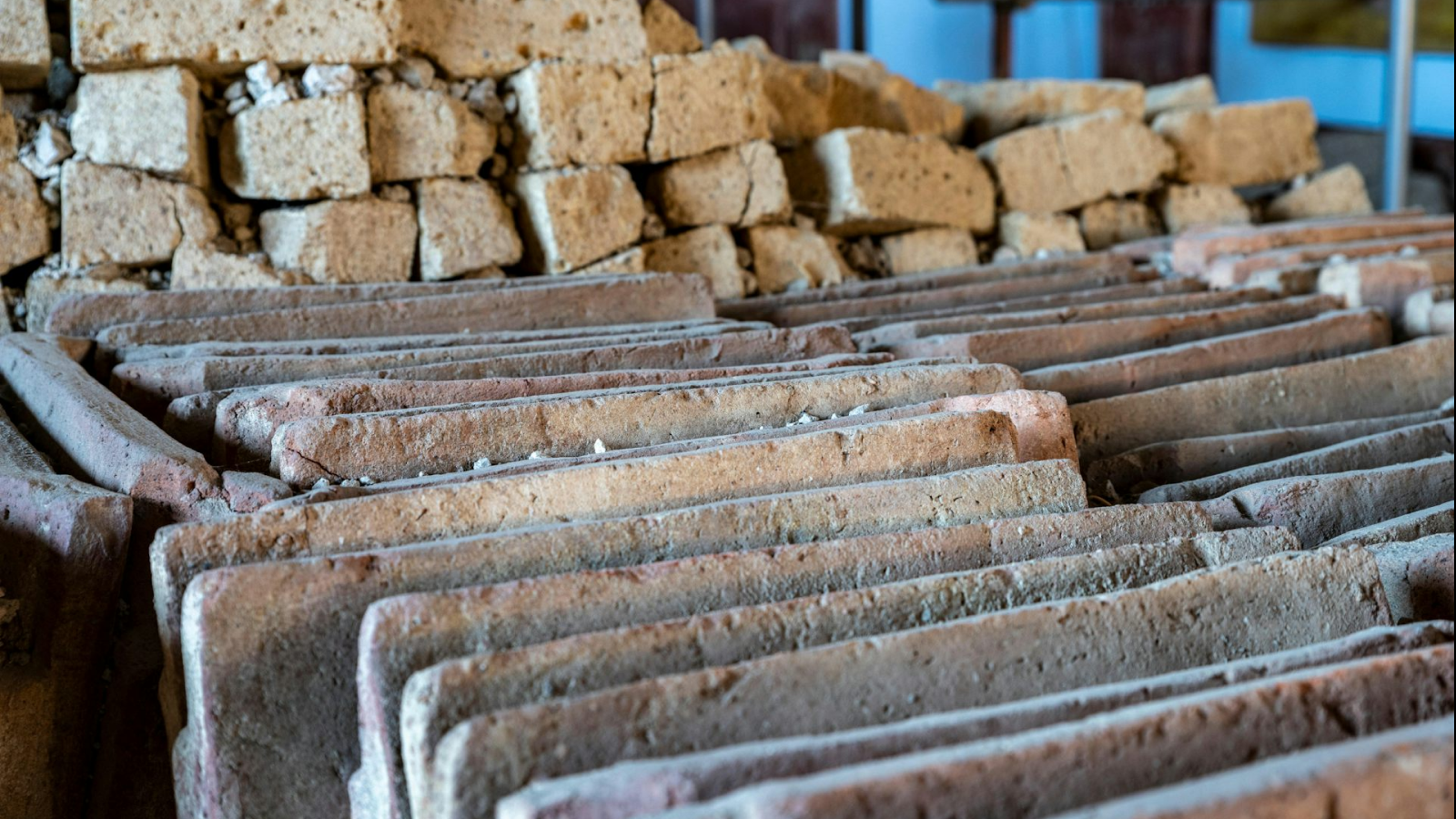Viking Age woman was buried with her dog in an elaborate 'boat grave,' excavations reveal
Researchers think the Viking Age boat burial of a woman and her pooch in Norway dates to between A.D. 900 and 950.
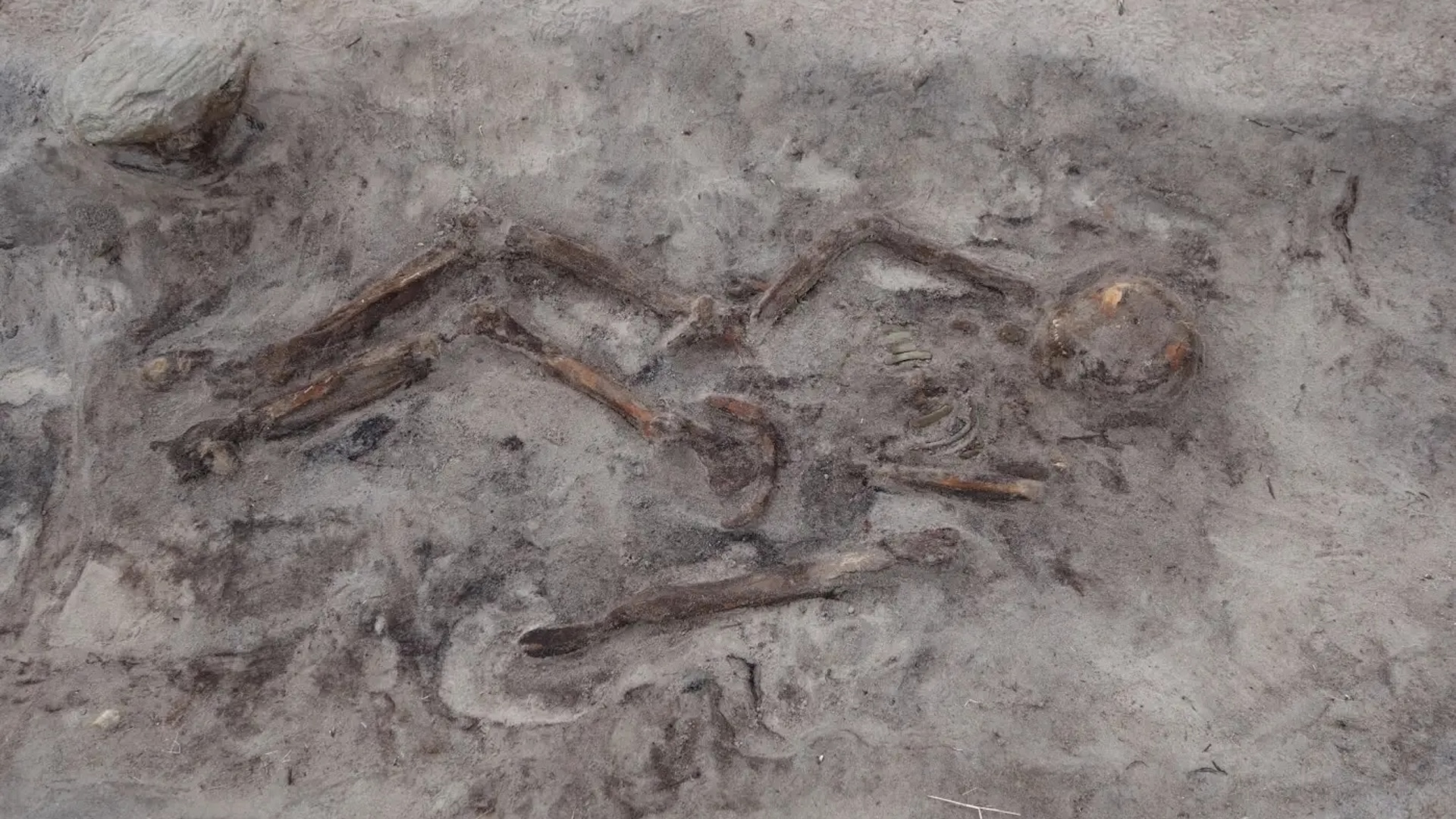
Archaeologists have unearthed what they think are the remains of a Viking Age woman buried with her dog in the far north of Norway.
The remains were found late last month in a well-preserved "boat grave" near the village of Sand on the island of Senja, which lies on the Arctic Circle, at a site first recorded by metal detectorists in 2023.
The archaeologists don't yet know whether ancient DNA or sex-determined proteins can be extracted from the remains. But they suspect it was the grave of a Viking Age woman because it also contained two distinctive brooches, oval in shape and trimmed with silver wire, that have never been found in graves of Viking Age men.
The style of the brooches indicates the grave dates to between 900 and 950, during the heart of the Viking Age. The researchers don't yet know how old the woman was when she died.
A small dog was placed in the grave at the woman's feet, perhaps indicating the strength of the bond between them.
Anja Roth Niemi, an archaeologist at the UiT The Arctic University of Norway who led the latest excavations, told Live Science that graves from this time throughout Europe often held the remains of dogs and horses. But while horse skeletons were often found in parts, suggesting the animals were sacrifices, dogs were usually buried whole. "This suggests that dogs and humans had a close and cherished relationship, even over 1000 years ago," she said in an email.
Related: 7 myths about the Vikings that are (almost) totally false
Get the world’s most fascinating discoveries delivered straight to your inbox.
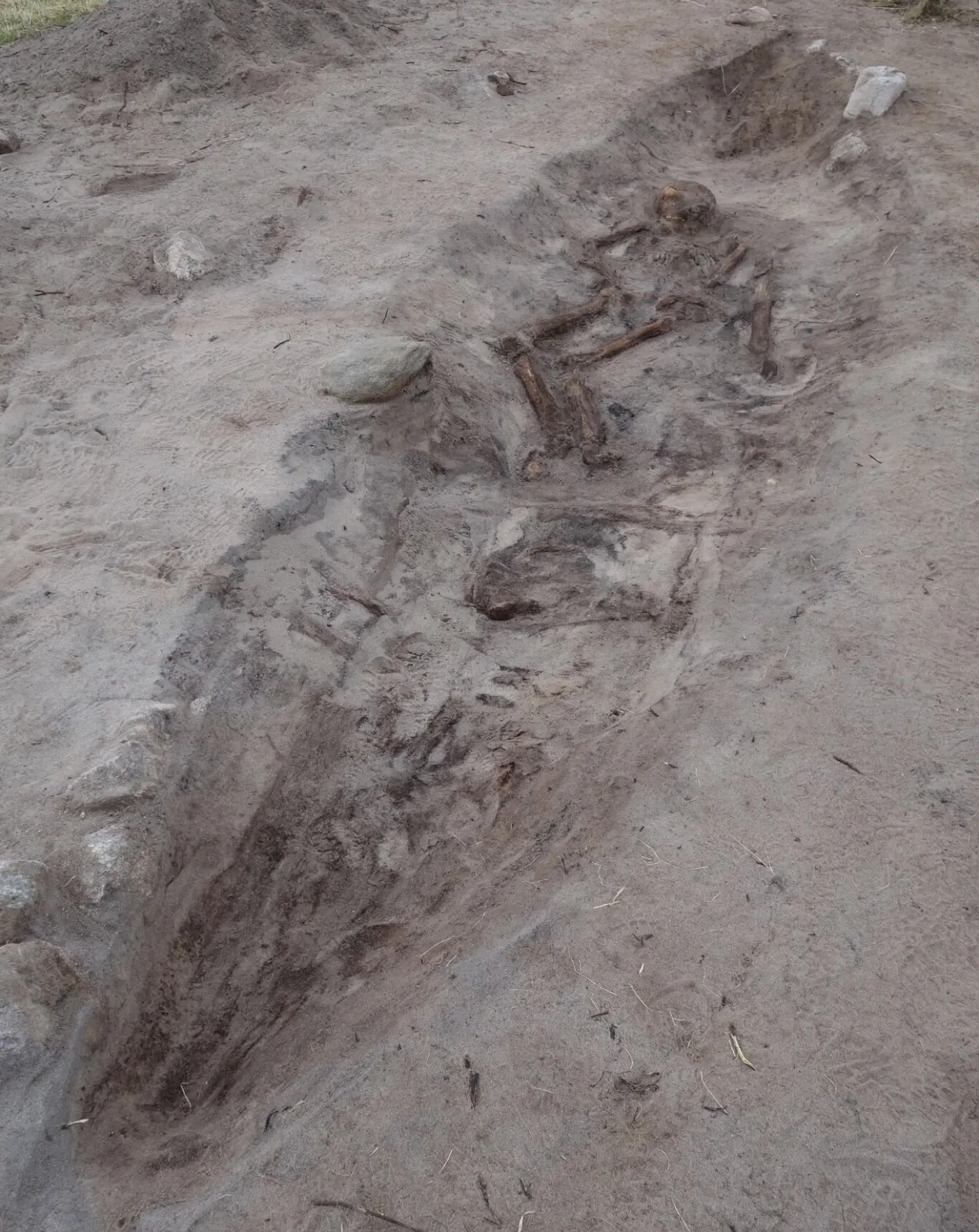
Boat grave
The researchers were surprised to find that the woman had been buried in a "boat grave" consisting of a "sewn boat" almost 18 feet (5.4 meters) long — the first such grave ever found on Senja.
In these primitive "sewn boats," the wooden planks of the hull were fixed with something other than iron nails, such as wooden plugs, plant fibers or animal sinew. The boat has now rotted away, and only its shape can be seen.
"So-called 'sewn boats' were, until a few years ago, very rare in northern Norway," Niemi said. "However, in recent decades, several such vessels have been found in Iron Age graves in the region." It's thus possible they were fairly common in the area, she added.
Two similar boat graves had recently been excavated on the Norwegian island of Hillesøy, about 10 miles (16 kilometers) north of Senja, she said. One of those burials was of a man, and the other was of a woman; both had lived a few generations before the woman in the Senja boat grave.
The elaborate burial at Senja and rich grave goods indicate the woman had belonged to the social elite. "We believe the woman buried here held significant status locally, and perhaps even across the region," Niemi said.
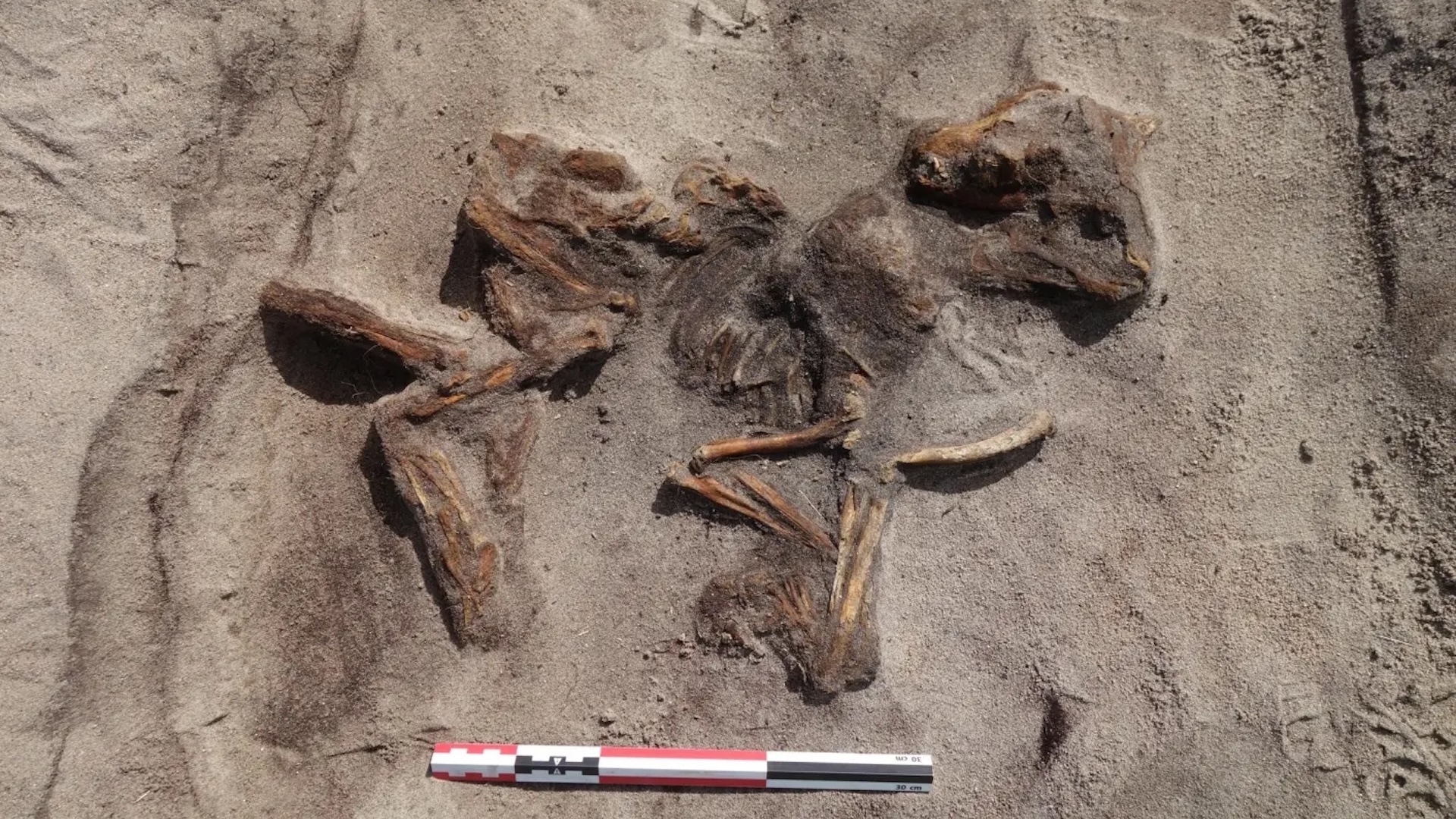
A small dog was placed in the boat-grave at the woman's feet, perhaps indicating a strong bond between the woman and her pet.
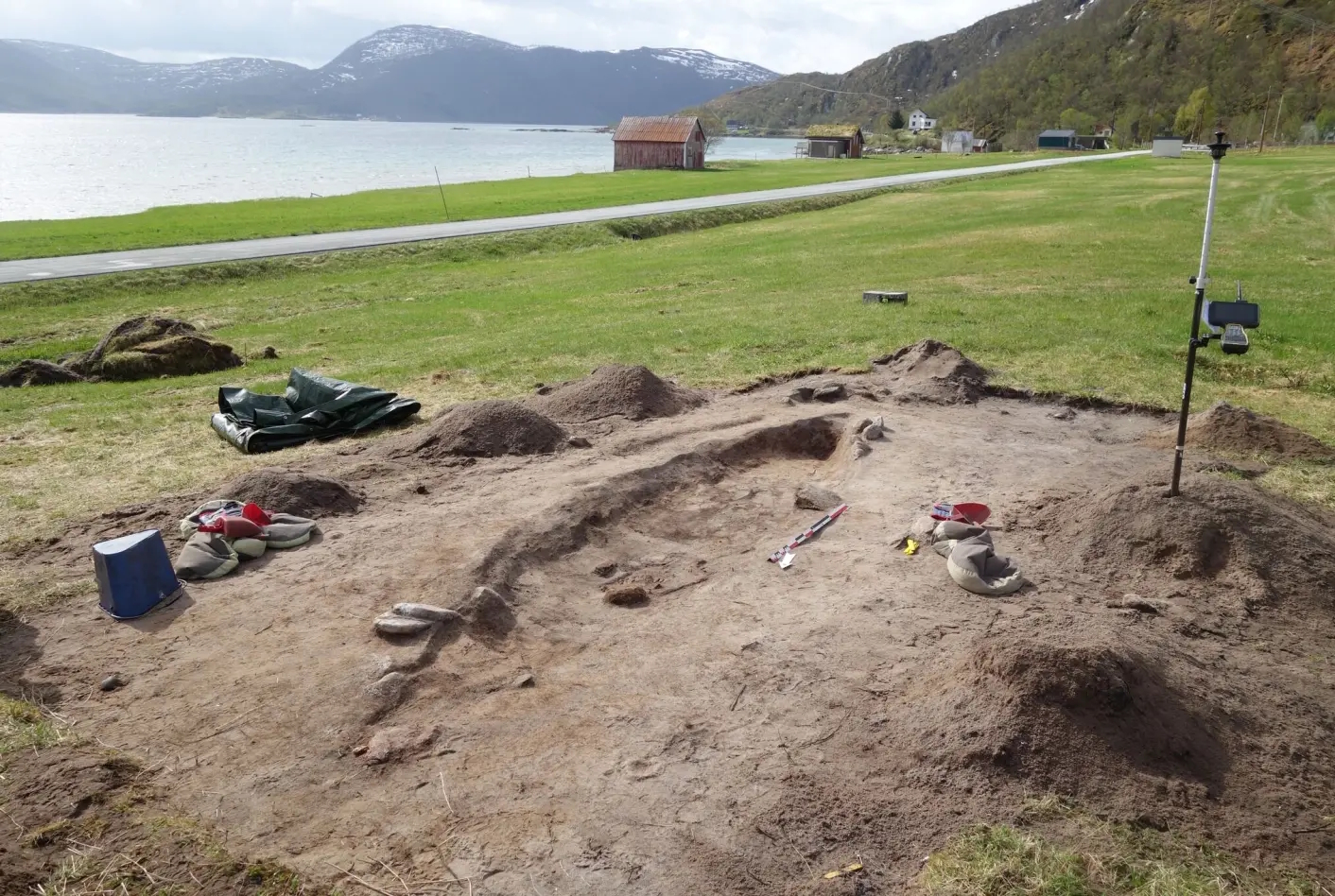
The Viking Age grave was found in 2023 by metal detectorists on the island of Senja in the far north of Norway.
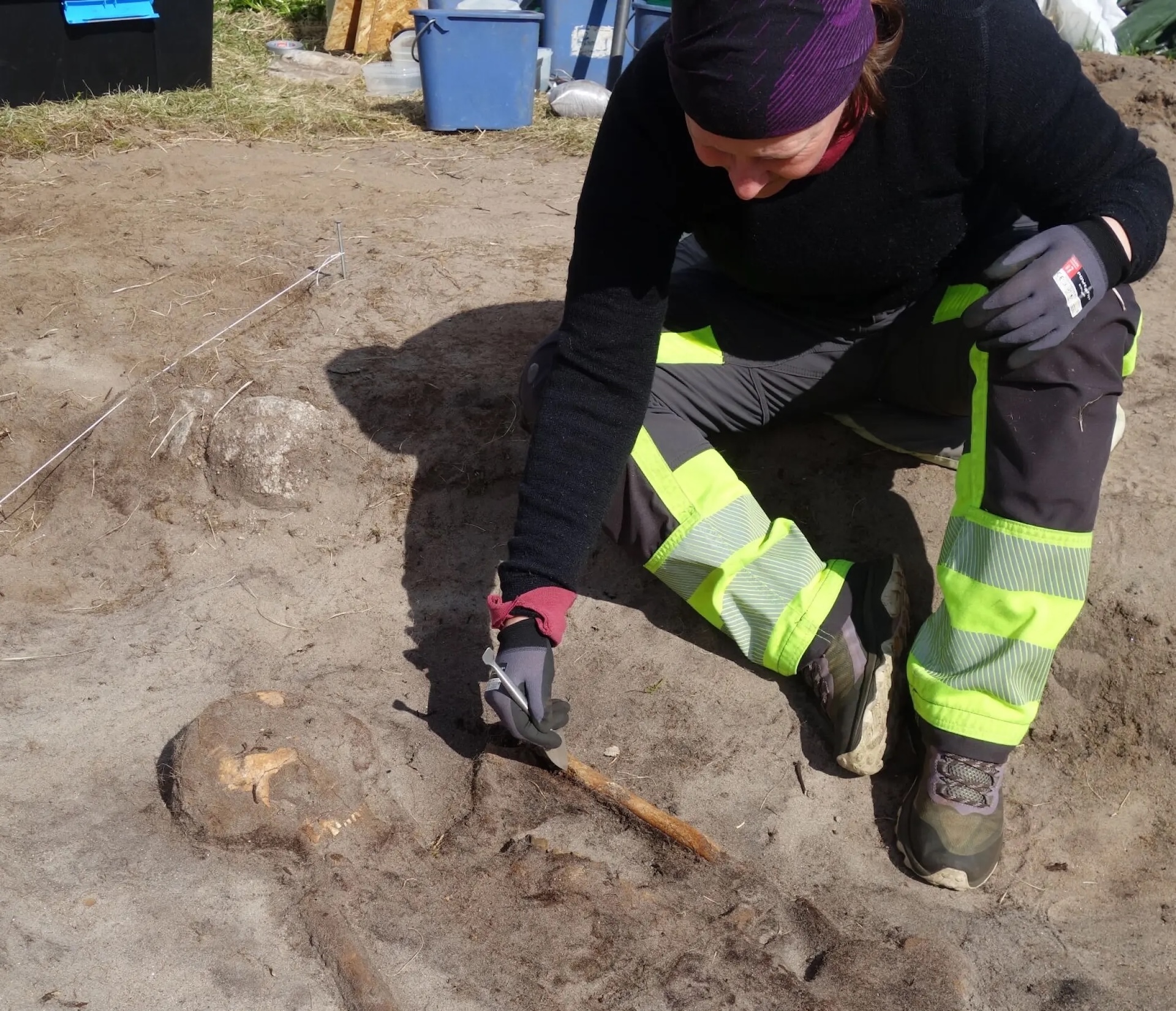
The researchers returned to the site late last month to excavate the Viking Age grave ahead of construction work near the site.
Making cloth
The body of the woman was placed in the middle of the boat, with her head facing north, and the dog's body was placed near the woman's feet, Niemi said.
The grave goods included the two brooches; an iron sickle; a slate "whetstone" for sharpening knives; a metal ring with bronze beads, which may have been for tying back hair; two disk-shaped beads, possibly made from amber; a spindle whorl; and what may have been a "sword" or batten used for weaving made from whalebone.
Niemi said the sickle and whetstone suggest arming and harvesting, while the spindle and batten suggest spinning and weaving; tools for making textiles were often found in women's graves in Norway and often indicated that the buried individual held high status.
It would have been important for the mistress of a house to ensure that high-quality textiles were produced. "Textiles were needed for clothing, blankets, and much more, but also for producing sails for boats and ships," she said.
In addition, the mistress of a house also would have been expected to create fine clothes and elaborate tapestries that could be displayed during feasts and other visits, emphasizing the hosts' status, Niemi added.
Viking quiz: How much do you know about these seaborne raiders, traders and explorers?
Tom Metcalfe is a freelance journalist and regular Live Science contributor who is based in London in the United Kingdom. Tom writes mainly about science, space, archaeology, the Earth and the oceans. He has also written for the BBC, NBC News, National Geographic, Scientific American, Air & Space, and many others.
You must confirm your public display name before commenting
Please logout and then login again, you will then be prompted to enter your display name.


